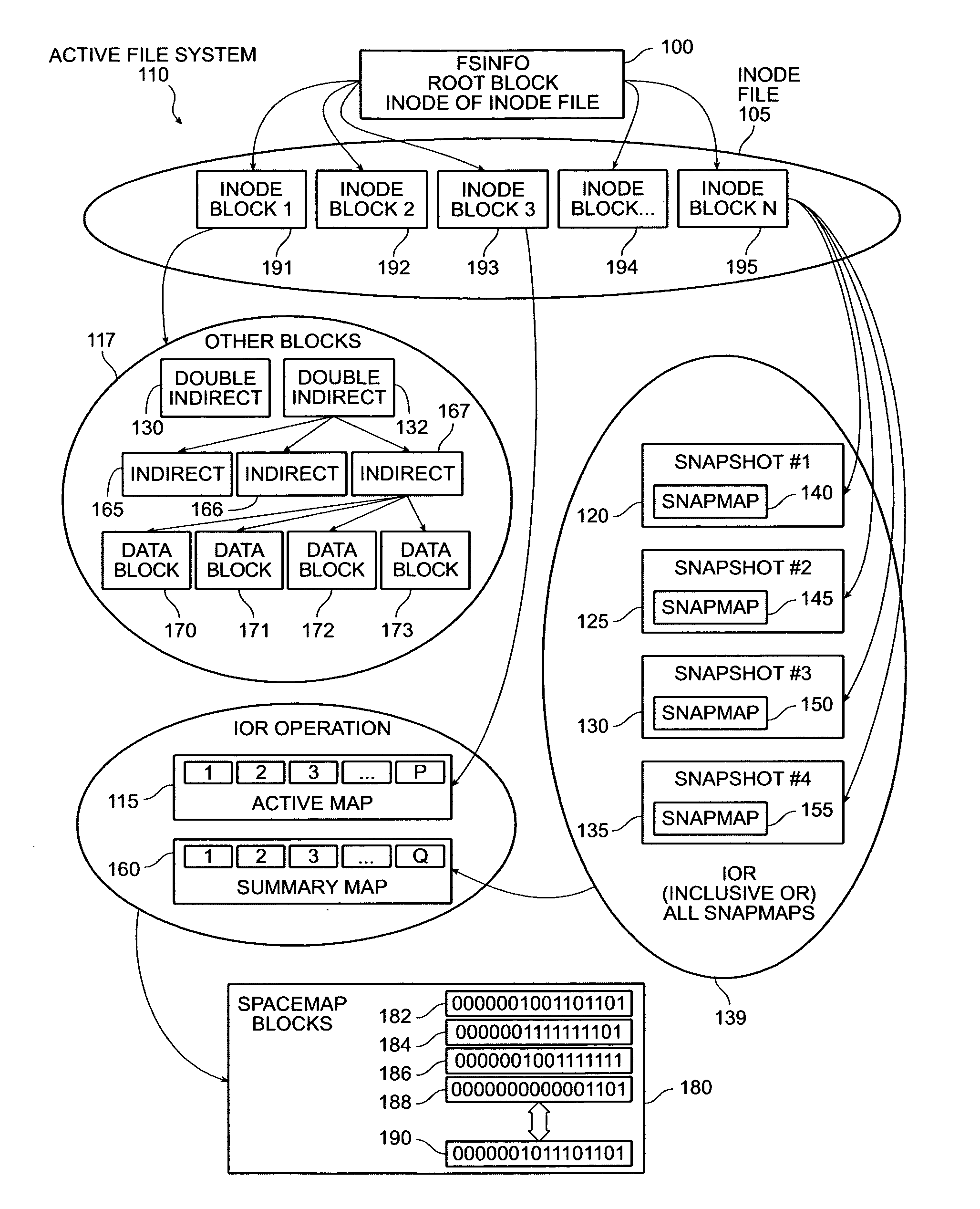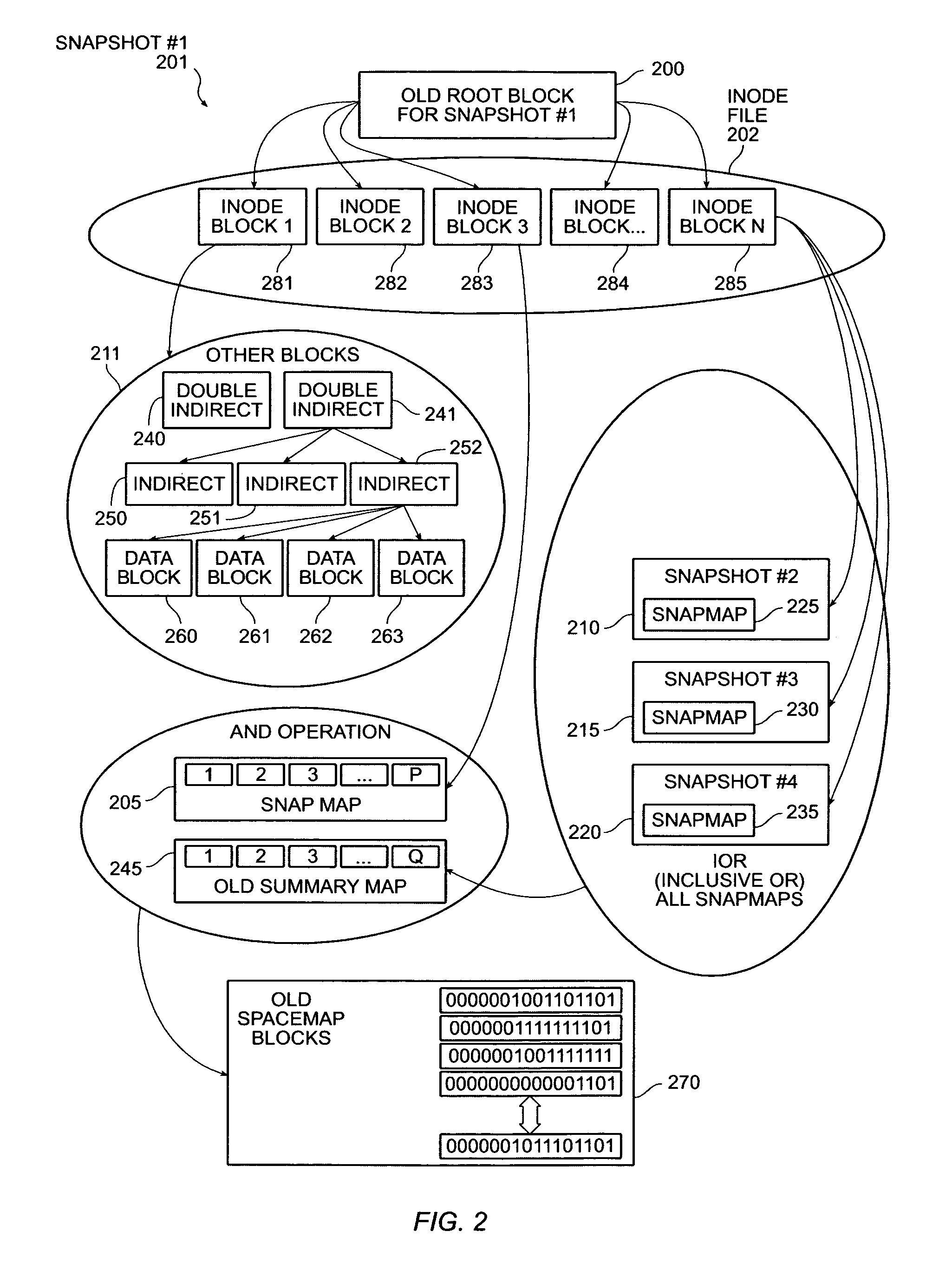Write allocation based on storage system map and snapshot
a storage system and snapshot technology, applied in the field of data storage systems, can solve the problems of inefficient methods both in their use of storage space and time-consuming steps of writing, and the required steps consumed a considerable amount of time and file system spa
- Summary
- Abstract
- Description
- Claims
- Application Information
AI Technical Summary
Benefits of technology
Problems solved by technology
Method used
Image
Examples
Embodiment Construction
[0028]In the following description, a preferred embodiment of the invention is described with regard to preferred process steps and data structures. However, those skilled in the art would recognize, after perusal of this application, that embodiments of the invention might be implemented using a variety of other techniques without undue experimentation or further invention, and that such other techniques would be within the scope and spirit of the invention.
Lexicography
[0029]As used herein, use of the following terms refer or relate to aspects of the invention as described below. The general meaning of these terms is intended to be illustory and in no way limiting.[0030]fsinfo (File System Information Block)—In general, the phrase “file system information block” refers to one or more copies of a block known as the “fsinfo block”. These blocks are located at fixed locations on the disks. The fsinfo block includes data about the volume including the size of the volume, volume level o...
PUM
 Login to View More
Login to View More Abstract
Description
Claims
Application Information
 Login to View More
Login to View More - R&D
- Intellectual Property
- Life Sciences
- Materials
- Tech Scout
- Unparalleled Data Quality
- Higher Quality Content
- 60% Fewer Hallucinations
Browse by: Latest US Patents, China's latest patents, Technical Efficacy Thesaurus, Application Domain, Technology Topic, Popular Technical Reports.
© 2025 PatSnap. All rights reserved.Legal|Privacy policy|Modern Slavery Act Transparency Statement|Sitemap|About US| Contact US: help@patsnap.com



